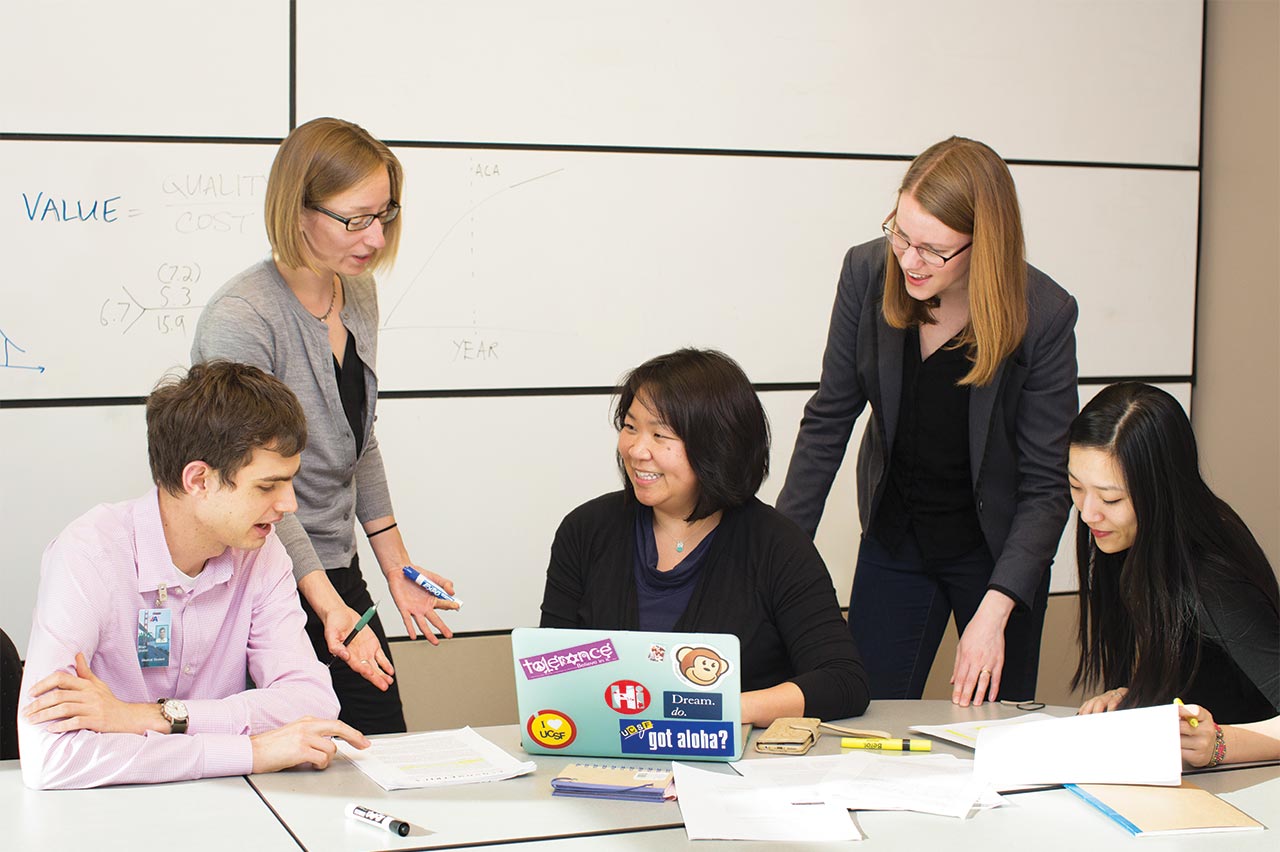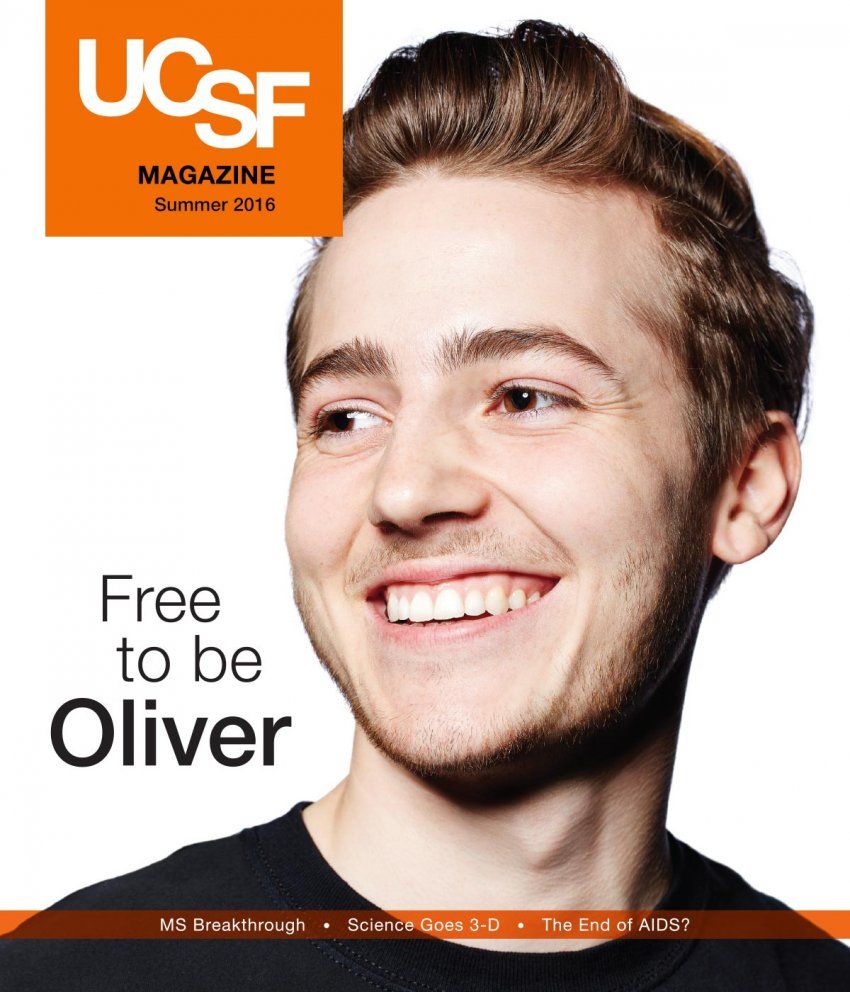
Weighing the Costs of Care
A new effort at UCSF seeks to increase the appropriate use of care.

UCSF student Brian Shaw spearheaded a course on high-value care, led this year by fellow students (from right) Vicky Hwang, Tabitha Vase, Sherry Yamamoto, and Ilana Garcia-Grossman. Photo: Sonya Yruel
Third-year UC San Francisco medical student Brian Shaw remembers watching his dying mother suffer from cancer and wondering about the futility of her treatment.
Bay Area physician Jessica Nutik Zitter, MD, MPH, recalls, as a new doctor, preparing a 55-year-old woman dying from advanced cancer and septic shock for a routine but painful procedure to monitor her decline. A nurse appeared in the doorway, held her hand to her ear like a telephone, and loudly said, “911. Get me the police. They’re torturing a patient in the ICU at St. Joseph’s Hospital.”
On that day, Nutik Zitter says, she learned a valuable lesson: “Even well-meaning doctors can perpetuate patient suffering by hiding behind interventions rather than communicating with their patients.”
These recollections illustrate the human side of a national movement to carefully weigh health care value – a treatment’s potential benefit measured against its potential costs, including physical and emotional suffering by the patient and family as well as economic costs, both personal and systemic.
For a health professional, answering the simple question “What is the value of what I’m proposing to do?” requires checking one’s instinctive desire, honed by years of training, to save life at any cost. It also requires listening carefully and making medical decisions based on the patient’s preferences.
The growing interest in health care value is part of an effort to change a “culture that’s overrun with overuse,” says Christopher Moriates, MD, a UCSF hospitalist and resident alumnus who teaches the concept to his internal medicine residents.
But, emphasizes Moriates, “This is not about taking things away from physicians or patients. It’s about stewardship. We want to increase the appropriate use of care.”
He and other experts at UCSF’s Center for Healthcare Value (CHV) are pursuing this goal by conducting practice-based research, sharing results with colleagues, and training the next generation of caregivers in value-based decision-making.
Thanks to Shaw, who aims to be a surgeon, that training for the past two years has included a 10-week elective, Introduction to High Value Care, offered by the School of Medicine but open to students from any of UCSF’s four professional schools.
With George Sawaya, MD, who holds the Robert B. Domush Chair in Obstetrics and Gynecology Education and directs CHV’s training initiatives, Shaw developed the curriculum that engages students, through lectures and discussions, in issues facing today’s providers. Taking over from Shaw for the second year’s offering are four medical and nursing students. The elective has enrolled approximately 30 students in each class.
Listening to Nutik Zitter and the other experts who share their experiences, it’s soon clear the training is less about saving money and more about honoring patients’ wishes and avoiding unnecessary suffering.
Shaw envisions a day when such discussions are standard. “What I would hope,” he says, “is that all individuals are actively participating in their care – that providers go beyond just discussing the risks and benefits and more fully incorporate patient values into clinical decisions.”



